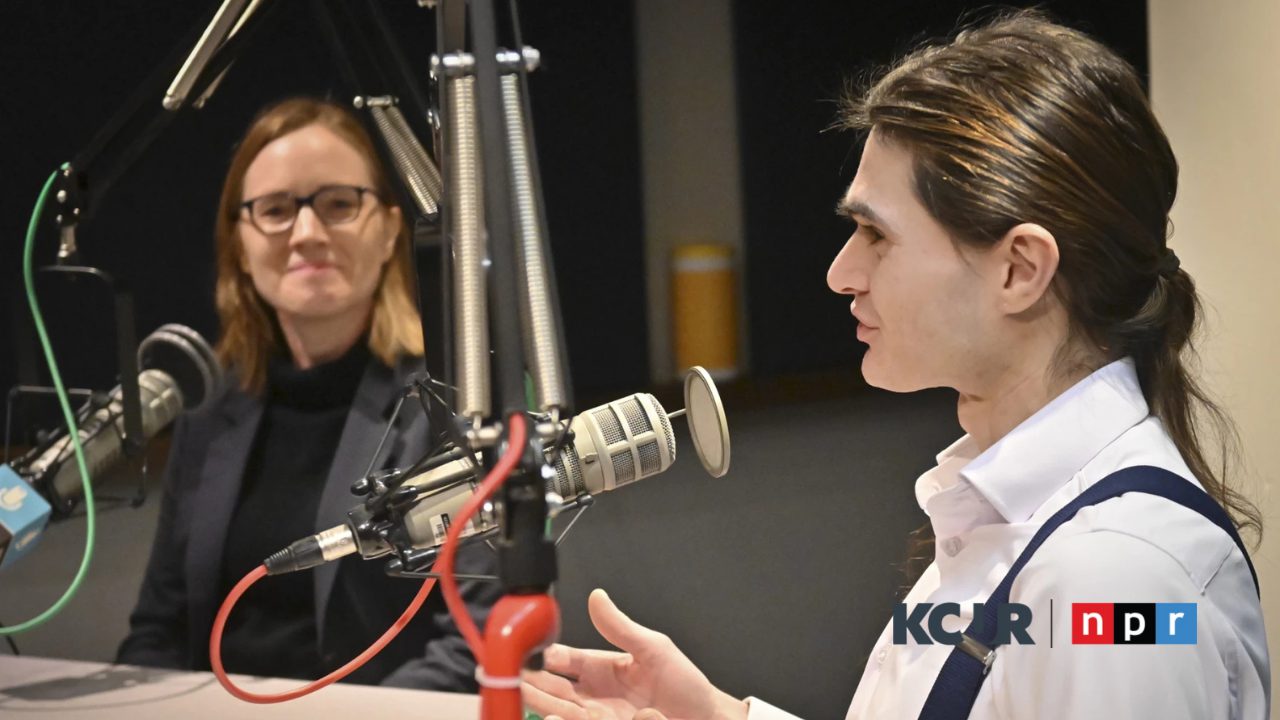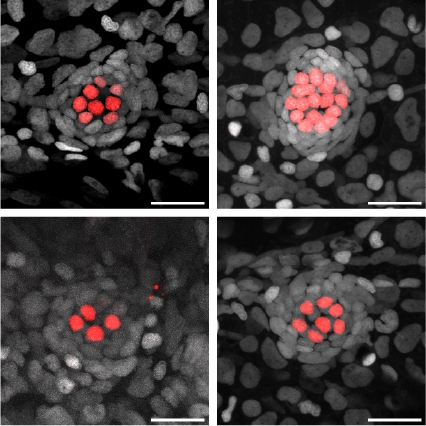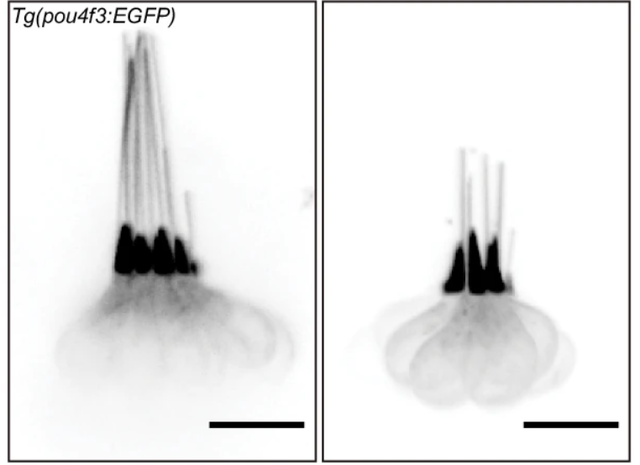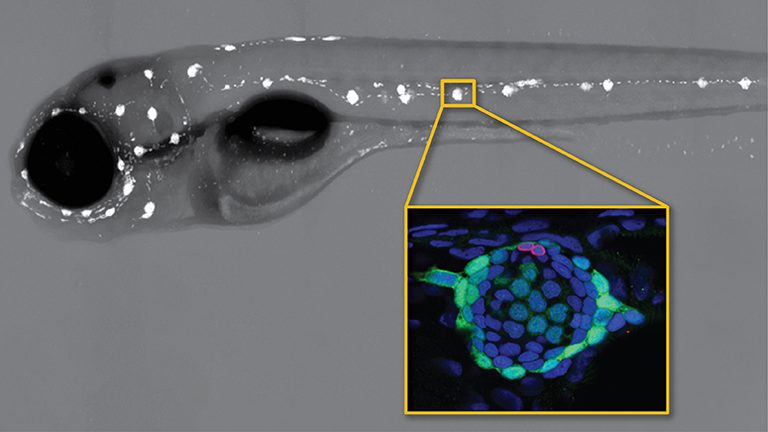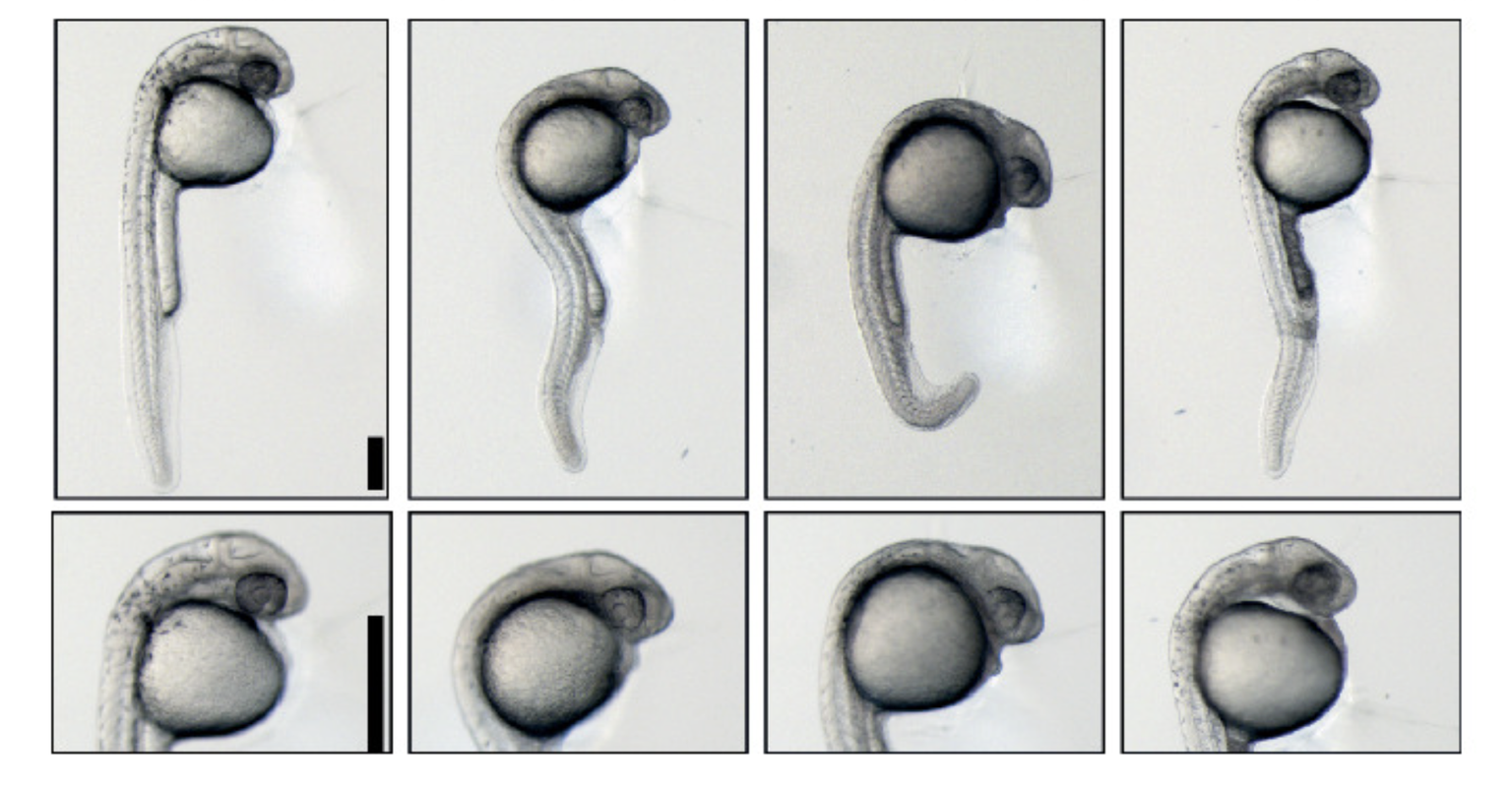Published in Nature Communications on August 18, 2025, the new study sought to identify common circuitry guiding the fate of hair cells across species. Co-led by Postdoctoral Research Associate Jeremy Sandler, Ph.D., and Research Technician Ya-Yin Tsai, the team found that turning off a single switch-like gene, prdm1a, changed a water-sensing hair cell into an ear hair cell. The team then used this discovery to map out a genetic circuit or “roadmap” that directs the earliest steps in hair cell development. From this common starting point, the cells then develop into many different types with specialized roles, each guided by distinct roadmaps. Notably, the core roadmap seems to be shared across species — from fish to mice, and even humans.
The lateral line sensory system
In addition to ear hair cells, fish have sensory hair cells along their bodies that form a sensory system that mammals lack — the lateral line system. Like a sixth sense, the lateral line is composed of sensory organs called neuromasts that line the sides of the body and sense water motion. This extra sense allows fish to detect prey, avoid predators, and to even “school,” the collective swimming behavior observed in many aquatic species as a navigational and survival mechanism.
This extra sensory system is not unique to fish; amphibians like frogs also have a lateral line as tadpoles but lose it when they mature.
“One could imagine this sensory system emerged because it is useful in an aquatic environment,” said Piotrowski. “It works even in murky or dark water when eyesight is no longer sufficient.”
While mammals lost this sensory system as vertebrates became terrestrial, the sound-detecting hair cells lining our inner ears resemble lateral line hair cells. In fact, when genes implicated in deafness in humans are altered within zebrafish lateral line hair cells, they no longer function properly. The identification of genes that determine hair cell identity is important as we are currently not able to regenerate the correct hair cell types in the mammalian ear.
Another recent discovery from the Piotrowski Lab uncovered that neuromast stem and support cells, the proverbial pearls strung along the lateral line necklace of zebrafish, are independently regulated by two distinct genes to guide hair cell growth. The gene identified in this study functions at a later point in time in shaping the fate of hair cells. Together, both studies are advancing our understanding of the complexities of cell growth, fate, and ultimately function.
The road from bench to bedside
The prdm1 gene the team identified has counterparts in the mammalian genome. In mice, for example, this gene is active in their hair cell precursors but not in the mature cell. According to Piotrowski, this gene likely participates in precursor cell division — when cells are partially specialized — but is turned off as cells mature into hair cells. Prdm1 is thus not involved in the actual determination of hair cells in humans. Therefore, still undiscovered other genes may possess this switch-like property.
Translating the newest findings into clinical therapies will take time. Piotrowski explained, “First, studies need to be performed in research organisms. Techniques like CRISPR could be used to turn off genes that repress regeneration. The tricky part is that these genes need to be regulated in the correct cell type at the correct time — however, a full understanding of when, exactly, specific genes are needed, or which ones are the most important, are questions that remains to be answered.”
“This study helps us better understand the key moment when the cells decide what type of hair cell they’ll become, informing new approaches for hair cell regeneration in the ear,” Piotrowski said. “I’m hopeful for what the future will bring.”
Additional authors include Shiyuan Chen, Logan Sabin, Mark Lush, Ph.D., Abhinav Sur, Ph.D., Elizabeth Ellis, Nhung Tran, Ph.D., Malcolm Cook, Allison Scott, Jonathan Kniss, Ph.D., and Jeffrey Farrell, Ph.D.
This work was funded by the National Institute on Deafness and Other Communication Disorders of the National Institutes of Health (NIH) (awards: 1R01DC015488-01A1, 1F32DC019023-01A1), the Eunice Kennedy Shriver National Institute of Child Health and Human Development of the NIH (award: ZIAHD008997), funding from the Hearing Health Foundation, and institutional support from the Stowers Institute for Medical Research. The content is solely the responsibility of the authors and does not necessarily represent the official views of the NIH.
